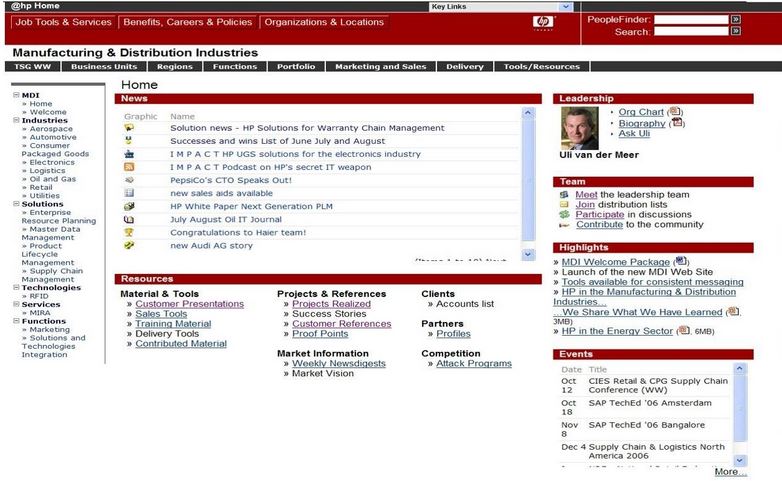KM Component 32 – Portals, Digital Experience, and Digital Workplace

Stan Garfield
Portals are web sites or apps that provide personalized capabilities to users through the use of customization, building blocks, and integration of multiple sources; historically, they have been leveraged as components of a KM strategy.
The term “portal” has several meanings. It can be a gateway website offering an array of services, a personalized home page that aggregates content from multiple sources, a document repository, or a sophisticated customizable user interface.
Enterprise portal vendors offer tools that promise to integrate diverse content through a highly-personalized user interface and advanced search capabilities. These portals are often positioned as knowledge management tools. Their importance has waned, giving way to new terminology such as Digital Experience Portal (DXP) or Digital Workplace. As an example, Gartner rebranded its annual portal conference to “Digital Workplace Summit.”
Gartner defines a digital experience platform (DXP) as an integrated set of technologies, based on a common platform, that provides a broad range of audiences with consistent, secure and personalized access to information and applications across many digital touchpoints. Organizations use DXPs to build, deploy and continually improve websites, portals, mobile and other digital experiences. DXPs manage the presentation layer based on the role, security privileges and preferences of an individual. They combine and coordinate applications, including content management, search and navigation, personalization, integration and aggregation, collaboration, workflow, analytics, mobile and multichannel support.
Digital workplaces use the intranet as a platform for information sharing, interoperability, user-centered design, and collaboration. They allow users to interact and collaborate with each other in a social media dialogue as creators (prosumers) of user-generated content in a virtual community, in contrast to intranet sites where users (consumers) are limited to the passive viewing of content created for them. Tony Byrne defines a digital workplace as “what an employee reads and does digitally while working.”
Internet portals such as AOL, Excite, Lycos, MSN, and Yahoo! were once the main gateways to the Internet, but their importance has also waned. They have limited personalization options, typically for location or language only. Google used to offer personalization through iGoogle. That name has been taken over by another company. See below for options for similar functionality.
Example of a Portal from HP

Platforms
- Acquia
- Adobe Experience Cloud
- Bloomreach
- CoreMedia
- Crownpeak
- HCL Digital Experience
- Huddle Enterprise Portal Software
- Jostle Intranet Portal Software
- Liferay Digital Experience Software
- Magnolia
- Microsoft SharePoint
- OpenText
Product Analysis
- Capterra
- CMSWire
- Forrester Wave: Digital Experience Platforms
- G2
- Gartner: Digital Experience Platforms (DXP)
- IDC: Digital Experience Management Software
Content from Lucidea

Stan Garfield
Please enjoy Stan’s additional blog posts offering advice and insights drawn from many years as a KM practitioner. You may also want to download a copy of his book, Proven Practices for Implementing a Knowledge Management Program, from Lucidea Press. And learn about Lucidea’s Inmagic Presto and SydneyEnterprise with KM capabilities to support successful knowledge curation and sharing
Similar Posts
Why Senior Leadership by Example is Important for Knowledge Management Success
Getting C-level advocacy for KM is critical for success; senior leaders should provide funding, demonstrate support, and lead by example.
Lucidea’s Lens: Knowledge Management Thought Leaders Part 67 – Shawn Callahan
KM Thought Leader Shawn Callahan helps analytically-minded executives tell stories that ultimately inspire action from employees and customers.
Lucidea’s Lens: Knowledge Management Thought Leaders Part 66 – Bob Buckman
Very few corporate CEOs directly champion knowledge management, and write about it. KM Thought Leader Bob Buckman is one of them.
Lucidea’s Lens: Knowledge Management Thought Leaders Part 65 – Johel Brown-Grant
KM Thought Leader Johel Brown-Grant specializes in using storytelling to create job stories, user journeys, and personas.
Hosting service
Enjoy all of the benefits of your Lucidea solution with secure, reliable, stress free hosting
Programs & incentives
No matter your size or budget, we’ve got you covered, today and tomorrow



Leave a Comment
Comments are reviewed and must adhere to our comments policy.
0 Comments